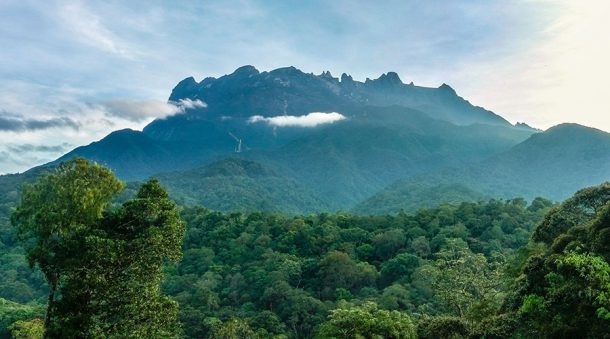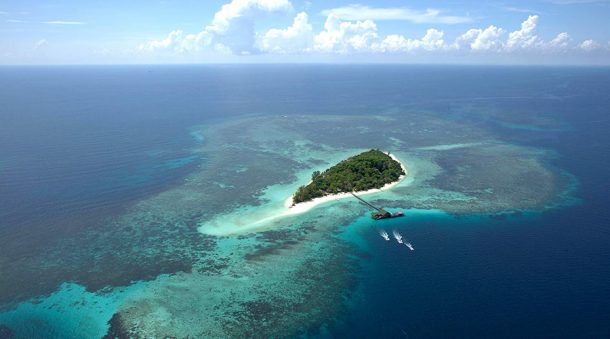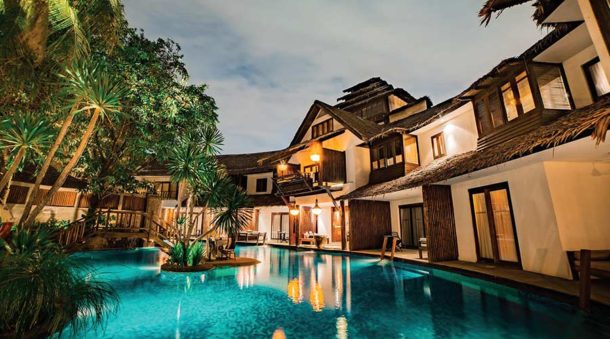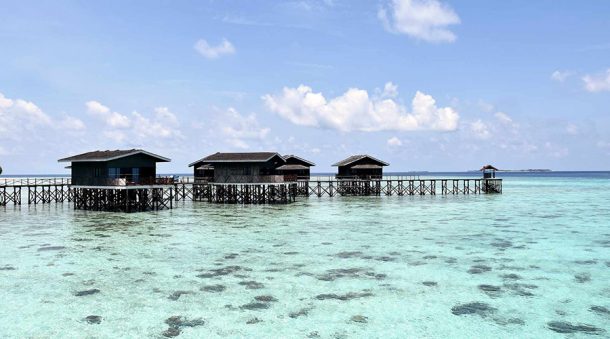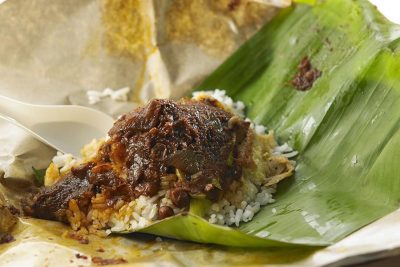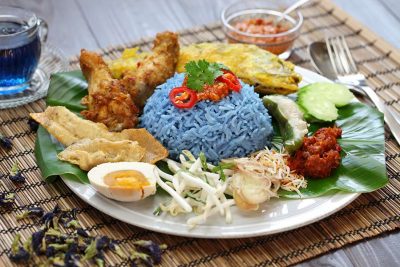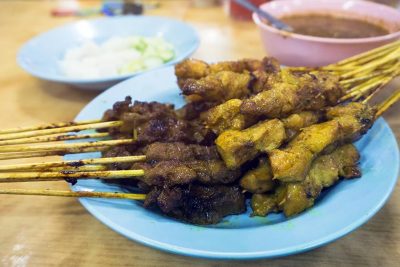Malaysia
Federal state of south-eastern Asia consisting of Western or peninsular Malaysia and Eastern Malaysia in Borneo. Also Labuan island, near Burnei’s coasts, is part of the federal territory. West Malaysia is bordered by Thailand in the north and Singapore in the south, East Malaysia is bordered by Indonesia in the south and surrounds Brunei.
About 10,000 years ago, the “Orang Asli” the Malaysian aborigines appeared; they probably came from southwest of China. “Orang Asli” in malay means “original population” and for anthropologists it includes 18 ethnic subgroups. From the II century a.D., the Indians began to frequent the region in search of raw materials such as gold, tin and wood. In the following centuries, Malaysia was ruled by Funan kingdom, situated in the today’s Cambodia, but the most significant occupation was the one of the Srivijayan between the VII and XIII centuries. In 1405, Malaysia came under the control of the Chinese, which brought prosperity and power. In fact, it is from the XV century, with the foundation of Malacca’s port and the arrival of Portuguese traders, that the economic development of the country has received a significant boost. From 1511 till 1621, the country was ruled by the Portuguese, then passed under the control of the Dutch and in 1795 under that of the British. With the Treaty of London in 1824, Malaysia was assigned to Great Britain, while Malacca was left to the Dutch, who subsequently gaveit up to the British in exchange for some territories in Sumatra. During the Second World War, Malaysia was largely conquered by Japan; the nationalist and independence spirit led to the birth of the Malaysian Union in 1946. In 1957, the independence of the Malaysian Federation was proclaimed, to which the territories of Singapore, Sarawak, Sabah and the Sultanate of Brunei which detached in the following decade) had joined. Singapore was later forced to leave the Federation in 1965, because of the frequent clashes with the central Malaysian government. In the late 1960s, there were clashes and tensions between the Malaysian and the Chinese communities. From 1981, Malaysia was led by the brilliant Prime Minister Dr. Mahathir Mohamed, experiencing strong economic growth. In 2004, Abdullah Bin Ahmad Badawa who is today still Prime Minister, was elected.
TRAVEL IN MALAYSIA
Conscious Journeys leads you to discover the Malaysian Borneo with its itineraries. Just by naming Borneo, the mind is filled with images of lush jungles and tropical landscapes. Despite this, Borneo is not, fortunately, among the favorite stages of mass tourism and remains a place yet to be discovered. As with all the itineraries proposed by Conscious Journeys, this also combines tourism and sustainability. The Ulu Ai Tourism Project is a cooperation between tour operators and the local Iban community, which ensures visitors an authentic and unforgettable experience and the local inhabitants the opportunity to manage tourism in their own territory.
AN ADVENTURE INTO THE MALAYSIAN BORNEO
Duration: 13 days
The Malaysian Borneo is an amazing place, for its jungles, its rainforests, the local tribes, the rich coral reef and fantastic islands.
Great for: Group Tour – Private Trip
ECO LUXURY EXPERIENCE IN BORNEO
Duration: 12 days
The Malaysian Borneo is a great destination for a honeymoon, for its climate and because here there are some of the most beautiful tropical islands.
Great for: Private Trip – Honeymoon
HERITAGE-LUXURY EXPERIENCE IN MALAYSIA
Duration: 14 days
This itinerary has been designed to explore in an 8-days journey, some of the best cities and historical sites of Malaysia
Great for: Private Trip – Honeymoon
Here you can find out about the travel extensions you can request in Malaysia.
Great for: Travel extensions
MAIN DESTINATIONS BORNEO MALAYSIA
Kuching: capital of the federal state of Sarawak, is the 4th largest city in Malaysia by population and the largest on the island of Borneo. The name of the city means ‘cat’ and on the streets of Kuching there are numerous statues representing felines and there is also a museum.
Batang Ai National Park: located in the Sri Aman district of Sarawak, this park takes its name from the river with the same name. It is the forest reserve of Iban people, that have lived in this area for over 400 years. The Ibans live in perfect symbiosis with the environment, so much so that they have become an integral part of the rainforest ecosystem. The area was proclaimed National Park in 1991 and it covers an area of 240 sq km, including an artificial lake that has made access to the water easier for the local population.
Sepilok: a place in the Borneo forest famous for its rehabilitation center for the orangutan, animal symbol of Borneo. A staff made up of doctors, rangers and volunteers takes care of the small orangutans up to 3 years of age, when more adults are entrusted to Orangutans. The specimens that show greater autonomy are reintroduced in nature.
Mount Kinabalu: at 4,095 meters high, it is the highest mountain in Malaysia and the twentieth in the world. It is part of a mountain area in the state of Sabah called Crocker Range. It is located in the Kinabalu’s park, inaugurated in 1964, with an extension of 754 km. It was the first Malaysian site counted by UNESCO as a World Heritage Site, thanks to extraordinary concentration of animal and plant species that inhabit it, making it an unique center for biodiversity.
MALAYSIAN CUISINE
The Malaysian cuisine fully reflects the multiculturalism of the population: Malaysians of Muslim faith, Chinese Buddhists or Taoists, Hindu Indians. Malaysian cuisine is therefore very varied, rich in flavors and spices. Characteristic of traditional Malaysian cuisine is spiciness, which brings it closer to Indonesian cuisine. Frequent is the use of herbs and spices, such as chili peppers, but also lemongrass, bindweed, Pandan leaves, lime, cumin, coriander, pepper, cardamom etc. Rice is almost omnipresent in the three main daily meals.
Satay: probably the most famous Malaysina dish, which consists of grilled chicken or beef skewers served with spicy sauce. Often served with Nasi Padang, that is white rise.
Nasi Lemak: includes steamed rice, chicken curry cooked in coconut milk, beef or squid, fried anchovies; it is served on banana leaves.
Ayam Percik: grilled chicken marinated with hot pepper and spices and seasoned coconut sauce.
Nasi Kerabu: the “blue rice” obtained by cooking dried peas.
Ikan Assam: curry-coated fried fish dish.
Sambal Udang: fried or steamed shrimps, covered with curry and spicy spices.
Sago Melaka: made from brown sugar, this sweet syrup often accompanies sweets and donuts.
USEFUL INFORMATIONS
How to get there
Passport: necessary with residual validity of at least 6 months from arrival in Malaysia.
Entry visa: the tourist visa is not necessary for stays no longerthan 3 months.
International airport: Kuala Lumpur, Kuching, Kota Kinabalu.
Borneo Climate
Borneo has a tropical climate, with temperatures ranging between 30 ° and 35 ° C during the year. There is no better time to visit it. In the plains, the rains are frequent all year.
Time Zone
GMT +8h
Currency
The current currency is the Ringit or Malaysian dollar. 1 euro= 4.95 Ringgit
Travel Safe
Compulsory vaccinations: the yellow fever vaccine is mandatory for all travelers over 1 year of age from countries at risk or who have passed through the airports of these countries for more than 12 hours.
Warnings: it is advisable to consult your doctor or the competent vaccination center to decide whether to get vaccinated for hepatitis, malaria and cholera. In addition, it is recommended to take out health insurance that covers not only medical costs, but also the eventual repatriation of health or the transfer to another country. In general, it is good practice to pay attention to nutrition, as the hygienic-sanitary conditions are not optimal throughout the country: wash raw vegetables very well, drink water or soft drinks on.
In particular, in Borneo malaria and dengue are still present, both carried by mosquitoes. For dengue there is no vaccine, therefore it is important to prevent it by using appropriate clothing and insect repellents. Wash raw vegetables very well, avoid ice and only drink bottled water.


